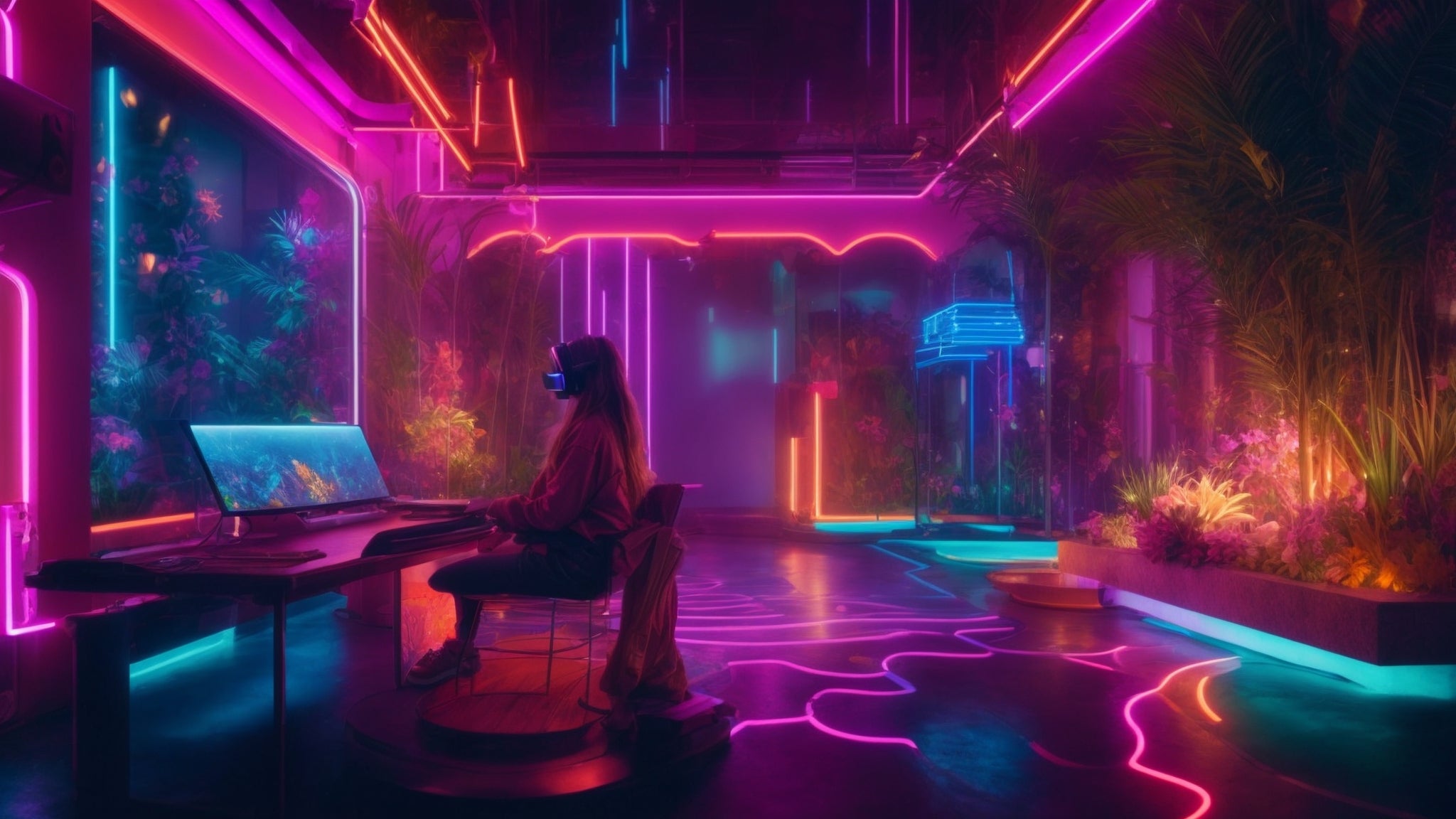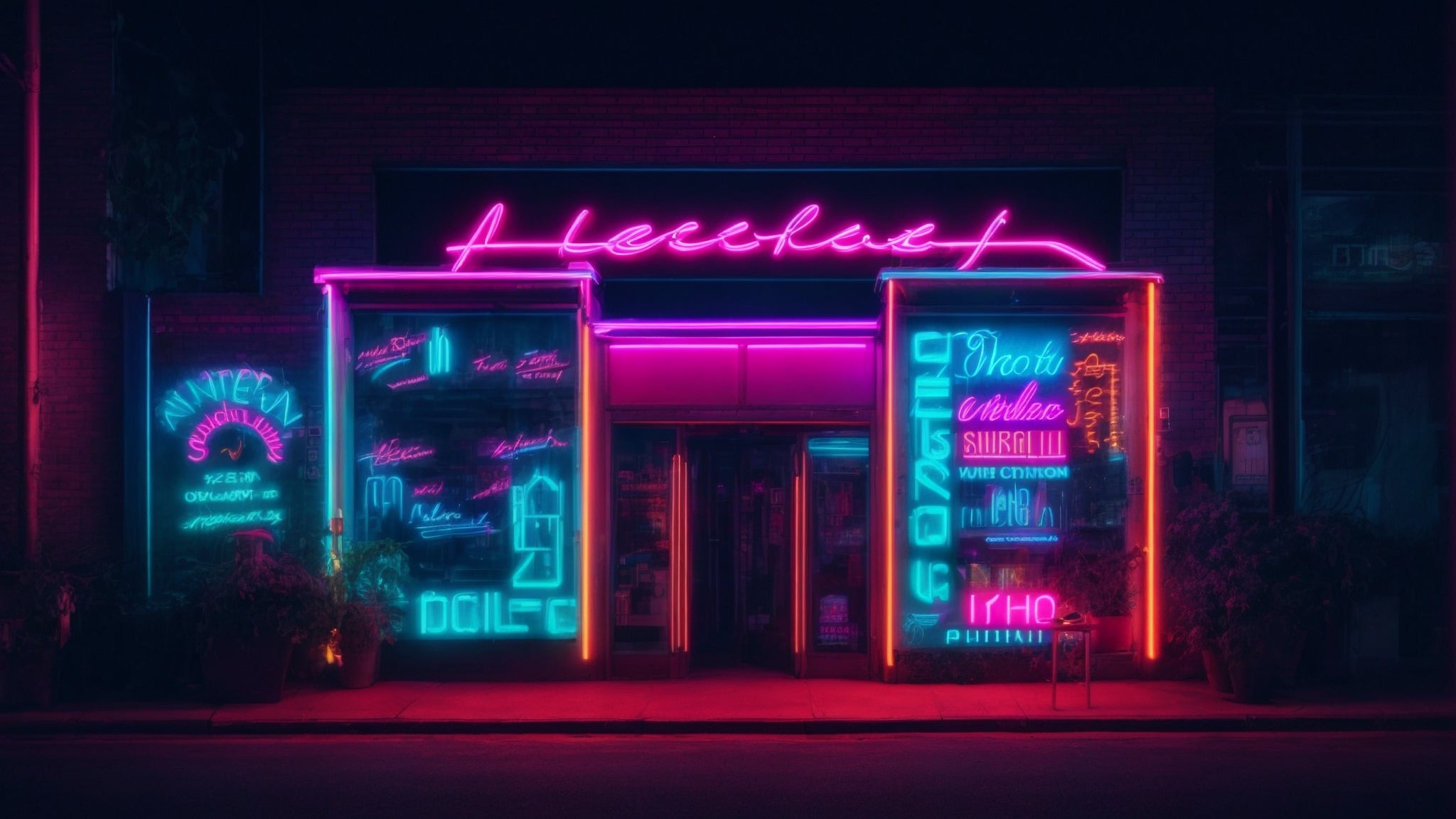Neon Dreams: Imagination and Neon in Science Fiction
Science fiction has always been a genre that pushes the boundaries of our imagination, exploring futuristic worlds and technologies. One recurring element that has captured the imagination of both writers and readers is neon. The vibrant glow of neon lights has become synonymous with the futuristic settings and dystopian landscapes often depicted in science fiction literature.
The Symbolism of Neon
Neon lights have a unique visual appeal that instantly captures attention. In science fiction, they are often used to symbolize a world that is both futuristic and mysterious. The vibrant colors and ethereal glow of neon lights create an otherworldly atmosphere, transporting readers to strange and fantastical places.
Neon lights also serve as a visual representation of the dichotomy between chaos and order. In dystopian science fiction, neon-lit streets are often juxtaposed with the dark and grim realities of society, highlighting the stark contrast between a technologically advanced world and the human condition.
Furthermore, neon lights can represent the allure of a false utopia. In some science fiction narratives, neon-lit cities may seem inviting and glamorous at first glance, but upon closer inspection, they reveal the underlying corruption and control that governs these societies. Neon becomes a symbol of the facade, hiding the true nature of these futuristic worlds.
The Role of Neon in Worldbuilding
Neon lights play a crucial role in worldbuilding within science fiction narratives. They help to establish the time period and setting, immersing readers in a futuristic environment. Whether it's the bustling streets of a cyberpunk city or the alien landscapes of a distant planet, neon lights provide a visual shorthand for a world beyond our current reality.
Furthermore, neon-lit cityscapes have become an iconic visual element in the cyberpunk subgenre. From the rain-soaked streets of Blade Runner to the sprawling metropolis of The Matrix, neon lights are an integral part of creating the gritty and high-tech aesthetic that defines cyberpunk.
Neon lights can also serve to differentiate various factions or groups within a science fiction world. Different colors or patterns of neon lights can represent different ideologies, power structures, or even levels of technological advancement. This use of neon allows authors to visually communicate complex societal hierarchies and conflicts.
Moreover, neon lights can be used to depict advanced forms of communication and information dissemination. In science fiction narratives, characters may interact with holographic neon displays or access information through neon-lit interfaces. This futuristic use of neon not only enhances the visual appeal but also highlights the advancements in technology within the story.
Neon and the Exploration of Identity
In science fiction, neon lights are often used to explore themes of identity and individuality. The neon-lit signs and advertisements that saturate the environment can be seen as a reflection of the characters' inner desires and struggles. They serve as a constant reminder of the commercialized and consumer-driven nature of these futuristic societies.
Additionally, the glow of neon lights can represent the allure of escapism and the desire for a better life. In a world where technology dominates, neon-lit spaces become a refuge for characters seeking freedom and self-expression. These spaces allow individuals to shed their societal roles and embrace their true identities.
Furthermore, the use of neon lights in science fiction can also explore the concept of transhumanism. The fusion of human and machine is often depicted in futuristic societies, and neon lights can be used to symbolize the blurring of boundaries between the organic and the artificial. The pulsating glow of neon becomes a visual representation of the transformation and augmentation of the human body.
Neon in Literature and Film
Neon has left an indelible mark on science fiction literature and film. From the classic novels of Philip K. Dick to the contemporary works of William Gibson, neon-lit cityscapes have become a defining feature of the genre. In film, the use of neon lights has been instrumental in creating visually stunning and immersive environments.
One of the most iconic examples of neon in science fiction is Ridley Scott's Blade Runner. The rain-soaked streets of Los Angeles, illuminated by neon signs and billboards, create a dystopian atmosphere that has become synonymous with the cyberpunk genre. The juxtaposition of the neon-lit cityscape with the gritty reality of the characters' lives adds depth and complexity to the narrative.
Another notable example is the film Tron, where neon lights are used to represent the digital world within a computer system. The vibrant and pulsating neon colors create a sense of energy and excitement, immersing the audience in a visually stunning and futuristic landscape.
Furthermore, neon lights have been used to depict alien civilizations and their advanced technologies. In science fiction literature and film, neon-lit spaceships or alien cities evoke a sense of wonder and awe, showcasing the vastness and diversity of the universe.
Conclusion
Neon lights have become an iconic visual element in science fiction, representing a futuristic and imaginative world. The symbolism, worldbuilding, and exploration of identity associated with neon in science fiction make it a powerful tool for writers to create immersive and captivating narratives. From symbolizing a dystopian future to exploring themes of identity and technological advancements, neon lights continue to fascinate and inspire both writers and readers. So, the next time you dive into a science fiction novel or watch a futuristic film, pay attention to the neon lights that adorn the world, for they hold the key to unlocking neon dreams and unveiling the limitless possibilities of the future.



Leave a comment
This site is protected by hCaptcha and the hCaptcha Privacy Policy and Terms of Service apply.